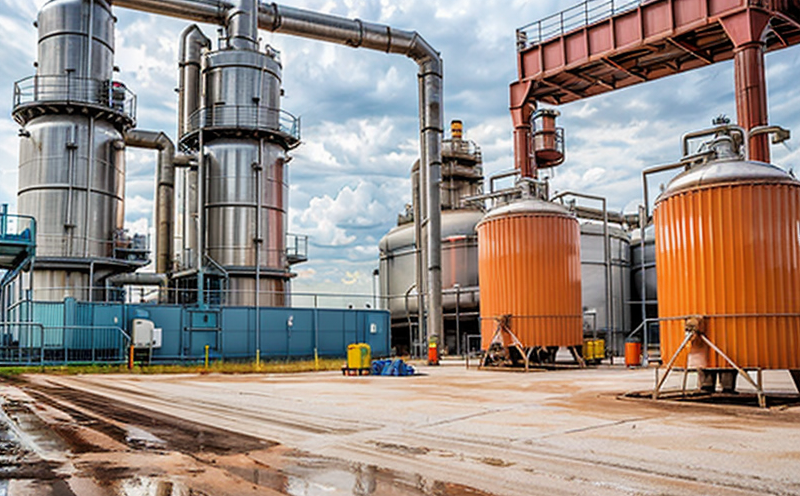Testing the corrosivity of chemicals used in cleaning agents, solvents, and industrial processes
The Importance of Testing Corrosivity in Chemicals Used in Cleaning Agents, Solvents, and Industrial Processes
In todays fast-paced industrial landscape, the use of cleaning agents, solvents, and chemicals is ubiquitous. From manufacturing facilities to laboratories, these substances are used to maintain equipment, clean surfaces, and facilitate various processes. However, with great power comes great responsibility and one critical aspect of responsible chemical management is testing for corrosivity.
Corrosion can have devastating consequences on equipment, infrastructure, and even human health. A single misplaced or poorly handled chemical can lead to costly repairs, production downtime, and potential regulatory issues. Thats why businesses need a reliable laboratory partner that specializes in testing the corrosivity of chemicals used in cleaning agents, solvents, and industrial processes welcome to Eurolab.
What is Testing Corrosivity?
Corrosivity testing evaluates the potential of a chemical to cause corrosion on materials such as metals, plastics, and other substances. This assessment helps determine whether a chemical can safely be used in various applications without compromising equipment or infrastructure. By identifying corrosive properties, businesses can take necessary precautions to prevent damage, ensure compliance with regulations, and optimize operations.
Why is Testing Corrosivity Essential for Businesses?
Prevents Equipment Damage Corrosion can cause significant harm to equipment, leading to costly repairs, replacement, or even complete system failure.
Ensures Compliance with Regulations Many industries have strict guidelines regarding the use of corrosive substances. Failure to comply can result in fines, penalties, and reputational damage.
Reduces Production Downtime Identifying potential corrosion issues before they occur minimizes the likelihood of production delays or disruptions.
Protects Human Health Exposure to corrosive substances can pose serious health risks, including skin irritation, respiratory problems, and even long-term effects like cancer.
Cost Savings By testing for corrosivity, businesses can avoid unnecessary expenses associated with equipment replacement, repair, or cleaning.
Enhances Operational Efficiency With a clear understanding of chemical properties, organizations can optimize processes, reduce waste, and improve overall performance.
Key Benefits of Using Eurolabs Corrosivity Testing Services
Accurate Results Our state-of-the-art laboratory equipment and experienced technicians ensure precise and reliable results.
Fast Turnaround Times We offer quick turnaround times without compromising on quality or accuracy.
Comprehensive Reporting Detailed reports provide valuable insights into chemical properties, helping you make informed decisions.
Customized Solutions Our team works closely with clients to understand specific needs and develop tailored testing plans.
QA Section Corrosivity Testing with Eurolab
What types of chemicals can be tested for corrosivity?
Our laboratory specializes in testing a wide range of chemicals, including cleaning agents, solvents, industrial process fluids, and more.
How long does the testing process take?
Turnaround times vary depending on the specific test and type of chemical. However, we strive to provide results as quickly as possible without compromising on accuracy or quality.
What are the consequences of not testing for corrosivity?
Failure to identify potential corrosion issues can lead to equipment damage, production downtime, regulatory problems, and even health risks.
Can I trust Eurolabs test results?
Our laboratory adheres to the highest standards of quality control, ensuring that every test is conducted with precision and accuracy.
-
Testing chemicals for their ability to cause damage to metals, plastics, and other materials
-
Simulating exposure to corrosive chemicals to evaluate their impact on materials used in industrial applications
-
Determining the level of corrosion that a chemical can cause on different surfaces over time
-
Evaluating the effect of temperature, humidity, and pressure on the corrosivity of chemicals
-
Ensuring that chemicals used in manufacturing do not lead to the degradation of equipment or infrastructure
-
Testing for the presence of corrosive substances that could pose a threat to workers and the environment
-
Simulating long-term exposure to determine the corrosive effects of chemicals during storage and transportation
-
Evaluating the resistance of coatings and protective materials against corrosion caused by chemicals
-
Testing the effects of chemical spills and leaks on the corrosion of pipelines, tanks, and machinery
-
Assessing the corrosivity of chemicals under extreme environmental conditions such as high temperatures and pressures
-
Testing the interaction between chemicals and metallic components used in construction or automotive applications
-
Ensuring that materials exposed to chemicals are resistant to corrosion in critical industrial settings
-
Verifying that chemical products comply with industry regulations regarding corrosivity and material safety
-
Testing the effectiveness of corrosion inhibitors in preventing chemical damage to metal surfaces
-
Determining the corrosion rates of chemicals used in aggressive environments like offshore drilling and chemical processing
-
Evaluating the impact of exposure to moisture, salt, and other environmental factors on the corrosive properties of chemicals
-
Simulating exposure to chemicals in real-world environments to assess their potential to cause corrosion over time
-
Testing the pH levels of chemicals and their relationship to the corrosivity of substances on surfaces
-
Assessing the long-term impact of chemicals on the integrity of storage containers, pipes, and tanks
-
Testing the effect of chemical interactions on corrosion rates when chemicals are mixed with other substances
-
Ensuring that chemicals used in coatings and paints do not cause corrosion over time in various environmental conditions




